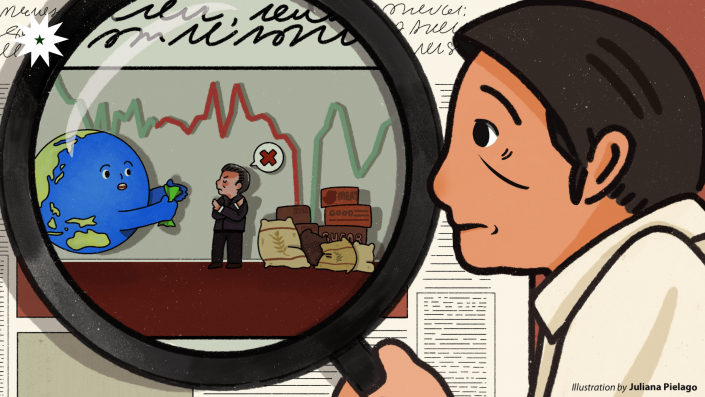When you say the era of the Ferdinand Marcos Sr. administration was a golden one, you’re probably referring to 1973 and 1976. Indeed, the economy grew by 8.78 percent during those two years, the highest rate on record since 1961. Of course, this is slow compared to Malaysia’s 11-percent growth in 1973, or Singapore’s 10 percent. But relative to our own historical performance, I guess, we can call it “golden”—two golden years, sandwiched between years of mediocre economic performance unchanged from the 60s.

Let’s look closer at one of our golden years: 1973. There was a rice shortage so bad that the government had to mix rice with corn grits to sufficiently supply the staple food. The New York Times had kept an eye on this story: “‘The Philippines’ top basketball stars eat corn grits. Former world lightweight boxing champ Flash Elorde and popular songstress Pilita Corrales also like the cereal,” advertisements on radio and television rung out trying to convince the public that unless rice stocks are mixed with corn, there will be no food left.
This was during a time when the state monopolized the rice trade through the Marcos-established National Grains Authority, later known as the National Food Authority. Monopolies are almost never a good idea and government monopolies are no different. A single producer can only supply so much of exorbitant demand; so naturally, prices will be higher for a product that would’ve been cheaper if there were more suppliers. The same principle applies to a “protectionist” economy; protecting your economy from foreign producers will only constrain potential supply from importers, making prices higher for goods that would’ve been cheaper with more suppliers.
The 50s to 60s had something else in mind: import substitution. Imports were heavily restrained in a vain attempt to force our own industries to produce everything we needed at that time. Call it self-sufficiency, if you will. It worked for a while, creating a respectable amount of growth in the economy through more and more production. Gross domestic product (GDP) grew at an average of 5.1 percent annually from 1960 to 1970. But import substitution only artificially protected young industries from the global market. Without big-boy competition from outside, they saw little need to improve productivity. The country also lost the opportunity to focus on goods that it could produce more cheaply and efficiently than other countries could, and trade.
Case in point: in the same decade, Malaysia grew at an average of 6.5 percent, Singapore at 8.8, and Thailand at 8.4. But unlike these neighbors who took part in the East Asian miracle with export-oriented industrialization, the Philippines followed the example of Latin American countries, protectionist and deep in debt. So when floods and drought caused rice stocks to deplete, only did the economy suddenly open up with thousands of tons of imports to remedy the shortage. Doesn’t that sound familiar? Yes, it’s the Philippines after every shortage—rice, pork, fertilizer, and now, sugar.
Marcos Sr. never sought any reforms and neither did his successor. To be fair to the latter, they were too busy dealing with the mess caused by the so-called golden age. Growth rates went downhill after peaking in 1976 until it plunged to a negative 7.04 percent in 1984, the country’s worst post-independence and pre-pandemic recession. After pumping the economy with foreign debt, most of which were not invested productively, Marcos Sr.’s regime could no longer pay up by the 1980s and declared bankruptcy in 1983. The economy was in a freefall—debt repayment stopped, wages were down, and unemployment was making records.
Sans the economic history lesson, what is concerning today is Junior’s love of his father’s economic direction. The country is currently facing a sugar shortage and like nearly all the shortages that came before it, it was largely caused by a protectionist economy that’s still deep in debt.
“As much as possible, we really don’t want to import [sugar],” Junior said August 17 of the sugar problem. No one’s saying we should fully open up the sugar industry to international trade; that would leave us at the mercy of an erratic global market. But according to a Philippine Competition Commission paper, there are only 27 sugar mills in the country as of March 2020. A single sugar mill requires an investment of at least P2 billion and a large production scale is needed to break even. The result of that is some mills end up monopolizing their regions, or a small group of mills resort to forming cartels, ultimately leading to higher prices.
An efficient solution would be to open portions of the sugar trade to foreign suppliers to allow prices to be competitive, and not just to temporarily relieve a current shortage. That formula isn’t exclusive to sugar; in fact, you may recommend the same to most other commodities. It’s no silver bullet, but it’s an invitation to finally embrace policy reforms. There’s no better time than now to grow out of the same old, inefficient policies from the 1970s.
